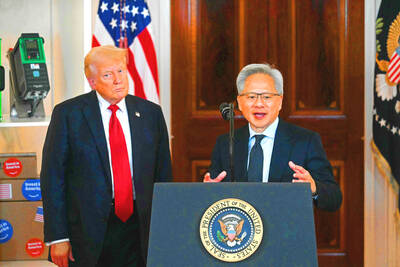When you get sick or aren't feeling well, you can say that you're feeling “under the weather.” Can you guess where this English expression comes from?
There are a couple of explanations. The first is that a long time ago, people didn't know about germs and sicknesses. They thought that people got sick from all kinds of silly thins, like taking a bath. One of the things that people thought made them sick was rain and clouds. So when people got sick, they would say that they were felling “under the weather”.
Some people give another explanation. When you're on a boat and there is a big storm, you might get sick because the boat starts rocking. When people felt sick, they would go to their bed inside the boat to be “under the weather.”
(Marc Langer, Staff Writer)
當你生病或身體感到不適,可以說你覺得「under the weather」。你猜得到這句英文用法的出處嗎?
關於他的出處有幾種說法。第一種是很久以前,人們對於細菌和疾病一無所知,對於生病的原因有各式各樣的好笑解釋,像是洗澡。他們認為會生病的其中一項原因是雲和雨,所以人們生病時就會說「under the weather」。
有些人提出其他解釋。當你在船上又遇上暴風雨時,你可能會因為船開始搖晃感到不適。當人們覺得不舒服,就會縮進船艙裡的床,去「under the weather」(躲在這種天氣之下)。
(翻譯:鄭湘儀)

Long before numerals and arithmetic systems developed, humans relied on tally marks to count. These simple, repeated marks — often just straight lines — are one of the earliest and most widespread methods of recording numbers. Archaeological findings suggest that humans began tallying in prehistoric times. During the Late Stone Age in Africa, humans began to carve notches onto bones to create tangible records of quantities. One of the earliest known examples is the Wolf bone, an artifact unearthed in Central Europe in 1937. This bone bears notches believed to be an early form of counting. Even more intriguing

A: In addition to Teng Kai-wei, Taiwanese infielder Cheng Tsung-che was called up temporarily to play for the Pittsburgh Pirates in early April. B: Yeah, Cheng is the 18th player in Taiwan’s baseball history to be moved up to the majors. A: Back in 2002, Chen Chin-feng became the first Taiwanese to play in the Major League Baseball (MLB), followed by Tsao Chin-hui, Wang Chien-ming, Kuo Hung-chih, Hu Chin-lung and Lin Che-hsuan. B: Those pioneers were later joined by Lo Chia-jen, C.C. Lee, Ni Fu-te, Chen Wei-yin, Wang Wei-chung, Hu Chih-wei, Tseng Jen-ho, Lin Tzu-wei, Huang Wei-chieh, Yu Chang,

When Nvidia CEO Jensen Huang revealed on Friday last week that the company is working with the Trump administration on a new computer chip designed for sale to China, it marked the latest chapter in a long-running debate over how the US should compete with China’s technological ambitions. The reasoning has sometimes changed — with US officials citing national security, human rights or purely economic competition — but the tool has been the same: export controls, or the threat of them. Nvidia believes it can eventually reap US$50 billion from artificial intelligence (AI) chip sales in China. But it so far has

Continued from yesterday(延續自昨日) https://www.taipeitimes.com/News/lang In many Western countries, the most common form of tally marks employs a five-bar gate structure: four vertical lines followed by a diagonal slash. To form this group, one begins by drawing four parallel vertical lines, each representing one. For the fifth, draw a diagonal line across the existing four. This diagonal stroke effectively creates a distinct group of five. To continue counting, just initiate a new cycle in the same manner. A set of five tallies combined with a single vertical line next to it represents the number six. Across many Asian countries, the Chinese character